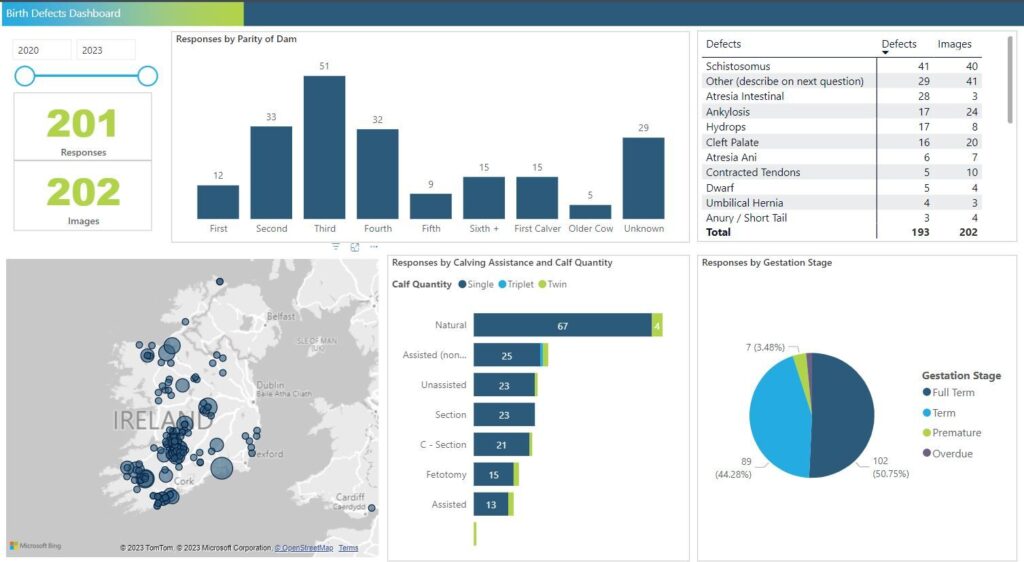XLVets Ireland in conjunction with Teagasc are delighted to announce that our paper “Bovine congenital defects recorded by veterinary practitioners” has been peer reviewed, accepted and now published on the 17th November 2023.
In 2020, from discussions within our XLVets Ireland Farm Animal Committee, Chaired by Donal Murphy M.V.B., M.R.C.V.S., there was a noticeable increase in bovine birth defects. From this, we began works on building an interrogatable analytical dashboard and an app for data collection late 2020 into spring 2021. The project was to move from perception to fact, by collecting data from on-site observations, live connected to a dashboard to utilise as both a learning & investigation tool. XLVets looked to improve the initial dataset, preparing for the following spring and sought academic expertise to review, from Professor John Mee, Teagasc. Collaborative works are currently underway to run our 4th year of data collection, beginning spring 2024.

Abstract
A mobile phone app was used by 59 veterinary practitioners to collect case histories and images of 191 cattle with congenital defects distributed nationally over a 3-year period. The majority of cases were recorded during the spring calving season (57.6%) in pluriparous dairy dams. The majority of calves were recorded at birth or within the first week (66.5%) in singletons born at full-term. On the majority of farms (75.9%), this was the only congenitally deformed bovine recorded up to that point in the year and on the majority of farms, there were no congenitally deformed cattle recorded in the previous 5 years. The majority of congenital defects (83.5%) were recorded in the musculoskeletal or digestive systems. The three most commonly recorded individual defects were intestinal atresia (24.1%), schistosomus reflexus (20.4%) and ankylosis (6.8%); multiple defects were recorded in 13.1% of cases. These findings highlight the relatively high prevalence of intestinal atresia and schistosomus reflexus in calves attended by veterinary practitioners, which warrants implementation of preventive measures. The project highlights the potential benefits of veterinary-practitioner apps to detect changing trends in endemic, or the emergence of novel, congenital or other conditions.
View online version of the paper HERE




